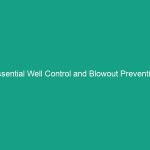Introduction
Good morning team,
Today, we’re going to discuss a crucial aspect of Workplace Safety that affects many of us, particularly in construction and manufacturing: silica dust. Our topic is “Must-Know Silica Dust Guidelines: Protect Your Team & Boost Safety.” Understanding these guidelines is vital not only for your health but also for the well-being of everyone on our team. Silica dust can pose serious health risks, and being informed is the first step in safeguarding ourselves and our colleagues.
Understanding Silica Dust
Silica dust, or crystalline silica, is a naturally occurring mineral found in materials such as sand, stone, and concrete. When these materials are disturbed—during cutting, grinding, or drilling—tiny particles are released into the air, which can be inhaled. It’s essential to recognize the significance of silica dust in our work Environment:
- Health Risks: Long-term exposure to silica dust can lead to serious respiratory diseases, including silicosis, lung cancer, and chronic obstructive pulmonary disease (COPD).
- Common Misconceptions: Many believe that silica dust is only a concern in certain industries. However, it can be present in various workplaces, from construction sites to manufacturing plants.
Key Hazards, Risks, and Safety Considerations
Identifying the specific Hazards associated with silica dust is crucial for our safety. Here are some key risks:
- Inhalation of Dust: Breathing in silica dust can lead to immediate and long-term health problems. The smaller the particles, the more dangerous they can be.
- Environmental Conditions: Working in poorly ventilated areas increases the risk of silica dust exposure. It’s vital to ensure proper airflow in our workspaces.
- Lack of Awareness: Many workers might not recognize the importance of silica dust safety, leading to negligence in following safety protocols.
Ignoring these safety protocols can have real-world consequences. For instance, a construction worker in our industry who failed to wear a respirator while cutting concrete developed silicosis, affecting their ability to work and enjoy life.
Best Practices, Procedures, & Actionable Advice
To mitigate the risks associated with silica dust, here are some Best Practices and Procedures we must follow:
- Use Proper Personal Protective Equipment (PPE): Always wear appropriate PPE, including respirators designed to filter out silica particles. Ensure that your equipment is properly fitted and maintained.
- Implement Engineering Controls: Utilize tools that reduce dust exposure, such as water sprays or ventilation systems. These methods help keep silica dust from becoming airborne.
- Work Practices: When cutting or grinding materials, do so in designated areas equipped with dust extraction systems. It’s important to minimize dust creation whenever possible.
- Regular Training: Participate in ongoing training sessions about silica dust awareness and safety practices. Knowledge is our best defense.
For example, a local construction company implemented a dust control program that included wet cutting techniques and proper ventilation. As a result, they saw a significant reduction in health issues among their workers.
Regulations, Standards, and Compliance
Compliance with safety Regulations is not just a legal requirement; it’s a moral obligation to protect ourselves and our coworkers. Here are some key regulations we must adhere to:
- OSHA Standards: The Occupational Safety and Health Administration (osha) has specific guidelines regarding permissible exposure limits for silica dust. Familiarize yourself with these limits and the measures needed to stay compliant.
- Company Policies: Our company has established safety protocols that align with OSHA guidelines. Make sure to review these policies regularly to stay compliant and updated.
Understanding and following these regulations protects you and helps create a safer workplace for everyone.
Employee Engagement & Discussion
Now, I’d like to open the floor for discussion. Here are some questions to consider:
- What safety challenges have you encountered related to silica dust?
- Have you noticed any improvements in our current safety practices regarding silica dust?
- What additional resources or training do you think would help us better manage silica dust exposure?
Your feedback is vital to enhancing our Safety Measures and ensuring that we all return home safe and healthy.
Conclusion & Key Takeaways
In conclusion, understanding the Must-Know Silica Dust Guidelines is essential for protecting your health and that of your teammates. To recap:
- Silica dust poses serious health risks that can be mitigated through proper safety practices.
- Use appropriate PPE, implement engineering controls, and follow safe work practices.
- Stay informed and compliant with OSHA standards and company policies.
Let’s commit to prioritizing safety in our work environment. Thank you all for your attention and dedication to making our workplace safer for everyone. Together, we can protect ourselves and each other from the hazards of silica dust.


